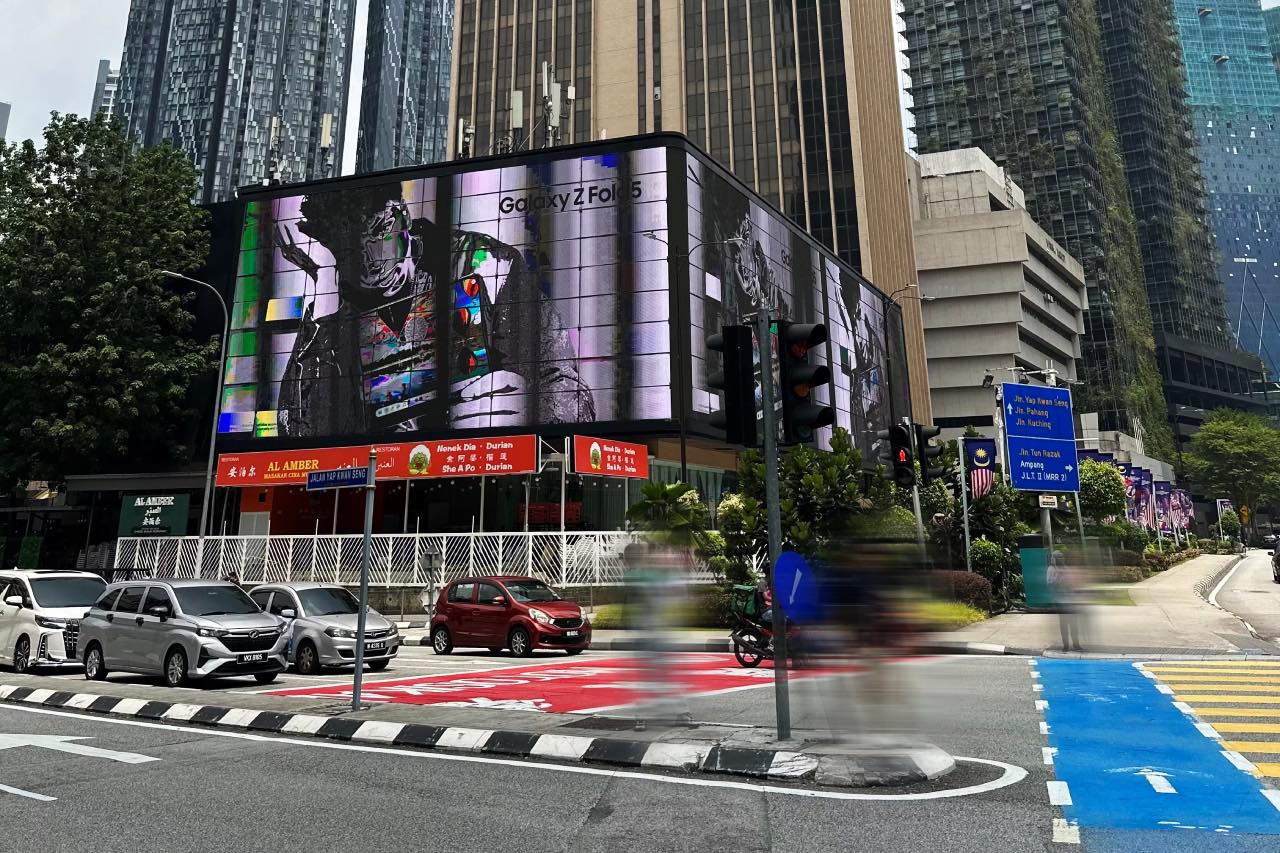
Saturday, 14 Dec 2024

As Digital Out-of-Home (DOOH) advertising continues to grow in Indonesia, creative design plays a critical role in determining the success of any campaign. Unlike standard digital ads, DOOH operates in physical environments and must capture attention quickly and effectively.
This article explores key design strategies for DOOH campaigns in high-traffic areas such as Jakarta, Bandung, and Bali. We will also highlight the importance of eye-level placements for better audience engagement.
DOOH ads live in fast-paced, crowded public spaces. Viewers may be walking, driving, or commuting. Effective DOOH design must:
1. Use Strong Contrast and Bold Colors
Bright, high-contrast visuals improve visibility in all lighting conditions. For instance, in Jakarta’s Sudirman area, a dark background with bright yellow or white text ensures the message stands out.
2. Less Text, More Visuals
Keep text concise (no more than 7 words) and let images do the storytelling. Long paragraphs get lost in fast-moving environments.
Example: In Bandung’s Dago district, a coffee brand targeting students and tourists might show a large cup and a simple tagline like “Refresh Every Step.”
3. Prioritize Eye-Level Locations
Eye-level DOOH at bus stops, sidewalks, or mall entrances encourages higher engagement because it naturally aligns with a viewer’s line of sight. In areas like Seminyak or Kuta in Bali, eye-level displays work well for promoting local events or hospitality offerings.
4. Adapt to Time and Local Culture
Match content to time of day breakfast ads in the morning, snack promotions in the afternoon, and nightlife or entertainment at night. Use local languages, cultural symbols, or landmarks to enhance relatability.
5. Keep Animations Simple
For digital screens, avoid fast transitions or complex animations. Use smooth, steady motion that draws attention without overwhelming the viewer, especially in busy traffic areas.
1. Jakarta (Sudirman-Thamrin)
2. Bali (Kuta and Seminyak)
DOOH creative is not just about aesthetics it is about fast, effective communication in a dynamic environment. With strong design, strategic placement, and cultural sensitivity, brands can maximize the power of DOOH in Indonesia’s most high-traffic areas.

Lestari Ads Agency - PT Lestari Dev Solusindo
Lestari Ads is a leading out-of-home media company with the largest network in Indonesia. We believe the world is a canvas. Every advertisement is an opportunity to inspire, engage, and transform public spaces. We continuously push boundaries in Out-Of-Home (OOH) advertising, changing the way brands interact with audiences beyond the digital screen, bringing stories to life where people live, move, and connect.
The most trusted OOH advertising agency in Indonesia
Experience the top of visibility with Indonesia's leading out-of-home (OOH) advertising agency. We specialize in turning the urban landscape into a dynamic canvas for your brand, crafting compelling narratives that capture the imagination of millions. Our mastery over strategic placements and innovative formats ensures your message not only reaches, but resonates with a diverse and expansive audience. With a proven track record of delivering high-impact campaigns across Indonesia's bustling cities and beyond, we redefine what's possible in OOH advertising.
Find the best quality billboard advertising space with variety of size and dimension
out-of-home advertising, digital billboards, traditional billboards, transit advertising, street furniture advertising, outdoor signage, digital ooh, led billboards, static billboards, large format advertising, advertising displays, ooh media, advertising billboards, outdoor digital screens, urban advertising, roadside billboards, digital signage, retail advertising, poster advertising, mobile billboard advertising, digital transit ads, interactive ooh, airport advertising, mall advertising, cinema advertising, sports venue advertising, digital outdoor advertising, public transportation ads, taxi advertising, bus shelter ads, pedestrian advertising, advertising kiosks, outdoor media solutions, billboard marketing, ooh advertising strategies, ooh media planning, digital billboard solutions, smart billboard advertising, contextual ooh ads, geotargeted ooh ads, location-based ooh, smart outdoor ads, programmatic ooh, data-driven ooh, brand awareness billboards, large-scale ooh campaigns, outdoor advertising effectiveness, billboard design, high-traffic billboard locations, hyperlocal ooh, street-level ooh, public transit advertising, ooh campaign management, outdoor digital displays, media buyers ooh, roadside digital ads, metro station advertising, shopping center ads, ooh advertising trends, outdoor media buying, bus wrap advertising, illuminated billboards, building wrap advertising, branded outdoor advertising, billboard networks, freeway advertising, expressway billboards, train station advertising, out-of-home advertising campaigns, event-based ooh ads, ooh media buying strategies, proximity-based ooh, national ooh campaigns, city-wide ooh advertising, large-scale outdoor campaigns, integrated ooh solutions, ooh digital networks, smart city advertising, mobile billboard solutions, dynamic outdoor ads, highway billboard advertising, ooh media optimization, digital out-of-home screens, high-impact ooh ads, retail digital signage, interactive billboard advertising, regional ooh advertising, local outdoor advertising, consumer engagement ooh, brand visibility outdoor ads, targeted billboard advertising, digital advertising screens, urban billboard advertising, weather-triggered ooh ads, motion sensor billboards, flexible ooh solutions, sustainable outdoor advertising, renewable energy billboards, solar-powered billboards, ooh for small businesses, outdoor brand activations.
Frequently Ask Questions
About Us

